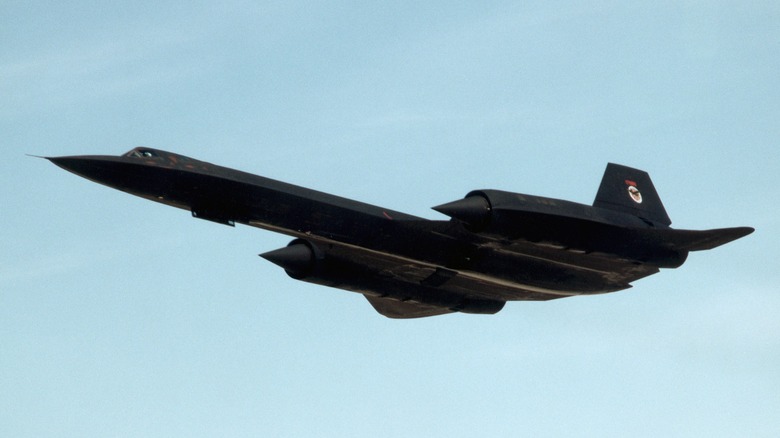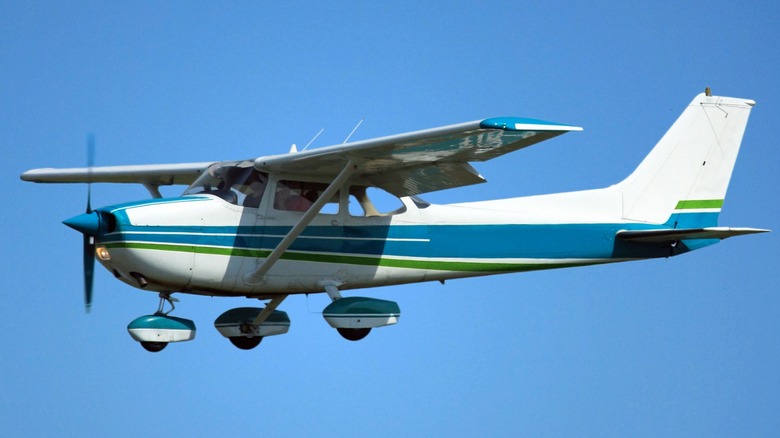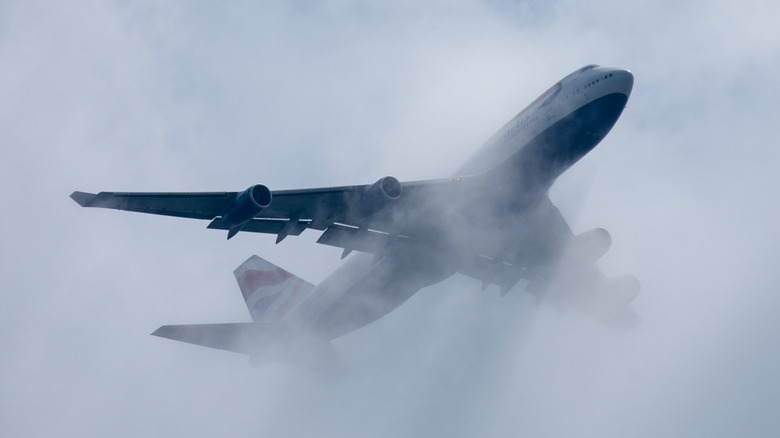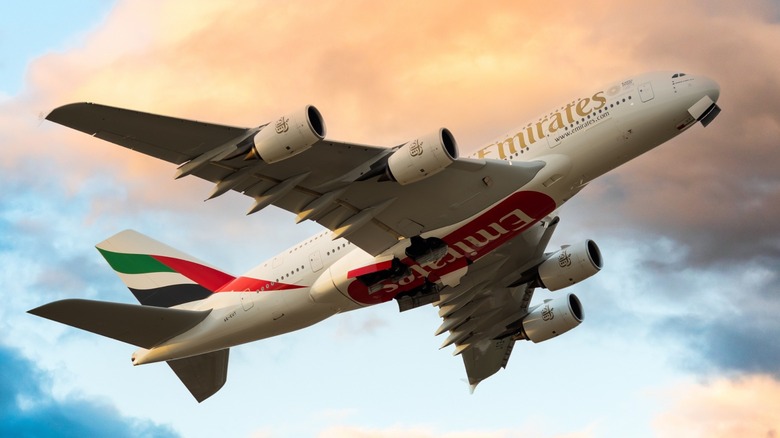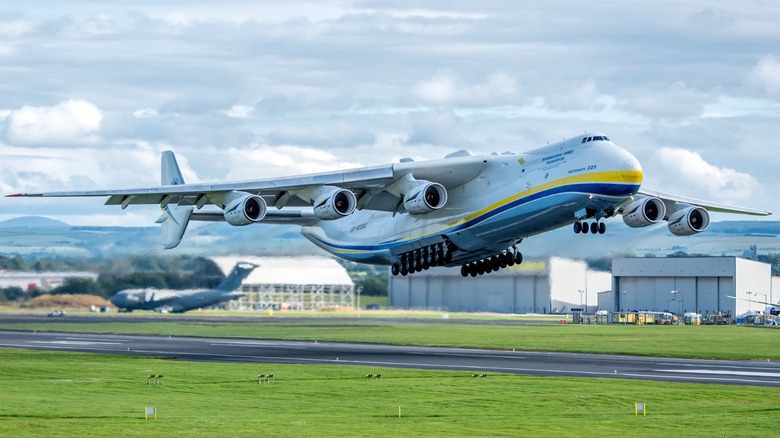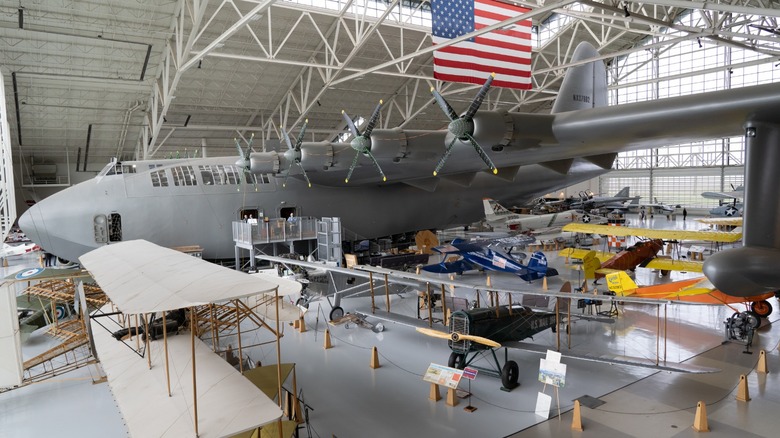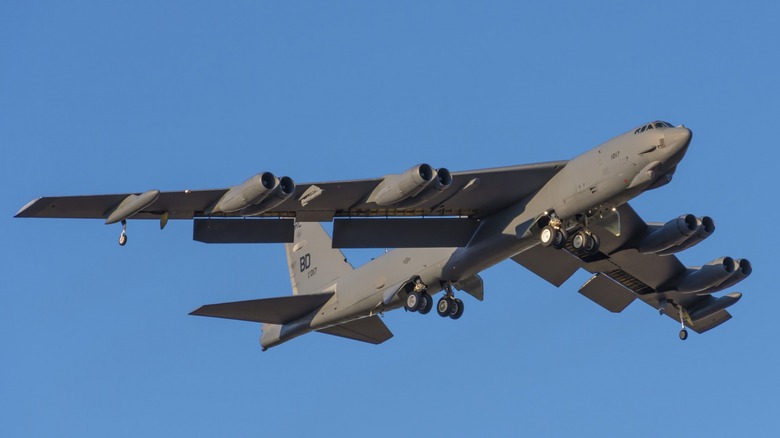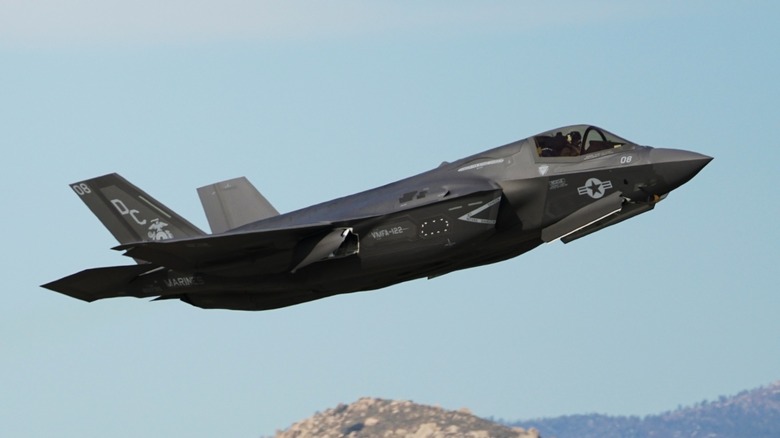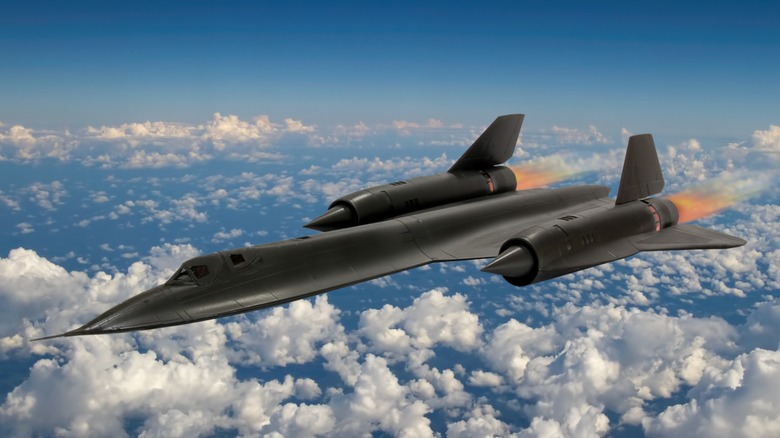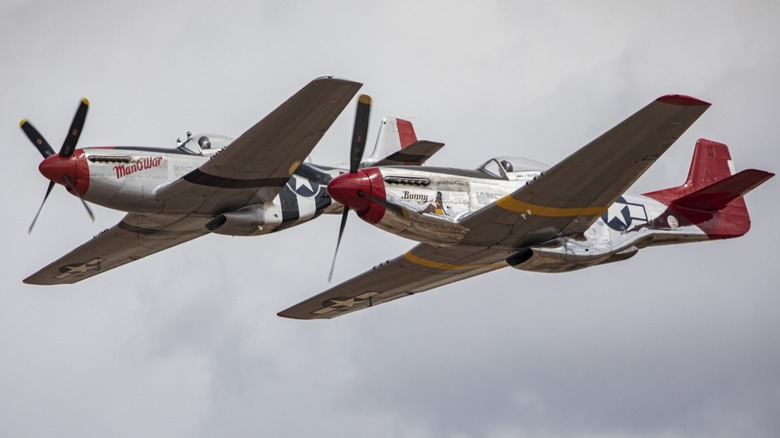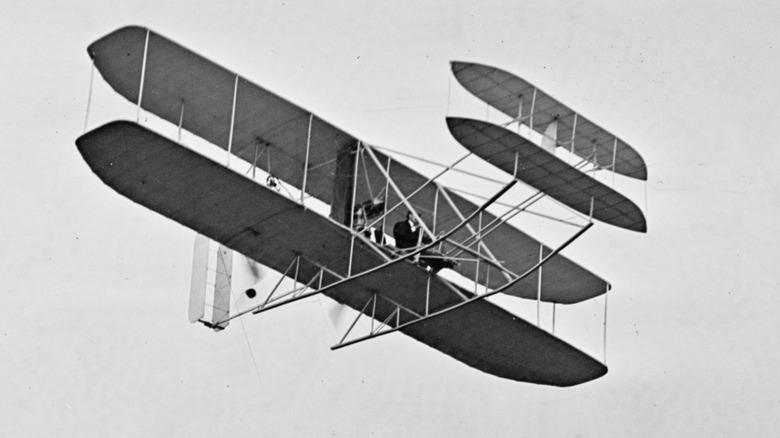The 10 Most Iconic Airplanes In Aviation History, Ranked
Aviation as we know it began well over a century ago, and it has brought us so many interesting flying machines that it would be impossible to take stock of all of them. Over those years, mankind has gone from flying solo in rickety contraptions with minimal amounts of power and dubious build quality. Yet, as with so many things, improvements and innovations in technology transformed primitive gliders into the extraordinarily advanced aircraft we have today.
A lot of planes, if not most, are not particularly remarkable in the eyes of the general public. For most people, if it can get you to a destination safely and relatively comfortably, that is all they need to know. Yet some aircraft rise above (quite literally) and leave an indelible mark on our collective psyche. A few inspire awe while others invoke nostalgia, and some stand as a symbol for something such as national pride or the spirit of innovation. Although there are many to choose from, here's an exploration of 10 of the most iconic planes in aviation history.
Cessna 172
As far as iconic planes go, there is one that most people will recognize but probably could not name. The Cessna 172 is a staple of general aviation airports across the country and can be found in rural and remote airstrips around the world. This plane originated in Wichita, Kansas, from a company called Cessna. It was introduced first in 1956 as a small, lightweight four-passenger airplane. Various 172 models have been produced by Cessna since its introduction. They have been powered by either Continental or Lycoming 6-cylinder engines, which added fuel injection in the late '70s.
What makes the 172 such a great plane is that it is easy to fly and a simple plane for beginner pilots. This is how it earned its iconic status. A sizable majority of pilots licensed in the United States learn how to fly in a Cessna 172. The latest model is the 172 Skyhawk. Its low cost of ownership, in relative aviation terms, is part of its charm. A new plane one for about $432,000 with an hourly flight cost of $131. These are some of the lowest figures in the industry. But the long-lived airframe remains iconic to the thousands of pilots who earned their wings in one of these. It's that and how recognizable it is to most people on the ground, whether or not they know what it's called.
Boeing 747
The jet age was alive and well in the late '60s, but it differed wildly from air travel that we know today. Jet planes such as the Boeing 707 made long-haul flights possible, but they were prohibitively expensive for a majority of travelers. The key to bringing these costs down and making tickets more affordable was to add passengers, and the Boeing 747 was the first of the widebody jets to make that happen. It was introduced in 1968 and entered passenger service in 1970 on a Pan Am flight with 335 passengers. Compared to the roughly 200-passenger count of the 707 at the time, this was a huge improvement that allowed scale to lower operating costs.
Throughout the '70s and '80s, the 747 may have been the most recognizable commercial aircraft in the world. Flying for multiple airlines across the continents, the unique raised bubble section that housed the cockpit and, initially, a first-class lounge, could be recognized by planespotters anywhere. The 747 was the workhorse of the skies for decades, ferrying people around the planet, but also being used for cargo, including transporting a Space Shuttle on its back.
As air travel has changed and technology improved, reliance on the 747 in fleets waned. However, its production continued until the last plane was built in early 2023. Typically, 747s are used for cargo service these days, although there are some still ferrying passengers around, including the U.S. presidential plane that flies under the call sign Air Force One — an icon unto itself.
Airbus A380
While the Boeing 747 was starting to get a bit long in the tooth, France's Airbus set out to create a new sky king. Airbus come up with an alternative that had much room to spare. The Airbus A380 program started in 2000, with the first plane deliveries taking place in 2007. As a new double-decker widebody airliner, the A380 is truly behemoth. While the 747 has a hump for its second deck, the A380's second deck runs the entire length of the plane. With this additional space, an A380 could be configured to carry up to 853 passengers, but the typical three-class configuration brings that down to 555, which is still impressive.
With a range of 8,300 nautical miles, the A380 is capable of moving passengers and cargo enormous distances with no stops. Furthermore, when configured for cargo only, it can carry 150 tons of freight. The plane is impressive in all respects. When it was first introduced, Airbus received orders primarily from airlines in Europe, the Middle East, and Southeast Asia. The U.A.E. airline Etihad has configured its planes with opulent and spacious first-class cabins called a "Residence," with room to move around, sleep supine, and even take a shower — for an exorbitant fare.
While Airbus managed to sell 251 of these planes, it wouldn't be as long-lived and successful as the 747. It was introduced as Asian economies were reeling from SARS, just a year before the 2008 financial collapse. Furthermore, passenger traffic steadily declined, even before the COVID-19 pandemic became a factor. Deliveries ended in 2021 but the A380 will continue flying for years to come.
Antonov An-225 Mriya
The Ukrainian aviation company Antonov has its roots in the Soviet post-war period but became a Ukrainian company in 1991. Today it is an aircraft manufacturer as well as an oversized air cargo carrier based in Kyiv. Antonov manufactured a variety of aircraft throughout the Soviet era, and towards the end, it created enormous cargo planes capable of handling equally enormous payloads.
Based on the already very large An-124 cargo hauler, the Antonov An-224 Mriya, which is Ukrainian for "dream," is the largest cargo plane ever built. It has six massive engines, 32 wheels for its landing gear, and a 290-foot wingspan. It was built to transport the Buran spacecraft, essentially a Soviet Space Shuttle. When the Soviet Union disbanded, one of two An-225 aircraft had been flight tested but not yet certified – the other one was incomplete. With the country split apart, the Buran program was scuttled and the An-225 put into storage in Ukraine. However, restoration and upgrades were performed to the aircraft and it was ready for service by 2001.
Antonov used the An-225 with a fleet of An-124 to provide air cargo for the largest objects ever flown, including a train locomotive. However, tragedy struck when Russia crossed Ukraine's borders in 2022, attacking Hostomel airport, Antonov's base of operations, destroying the An-225 Mriya in one of the first battles of the still-ongoing conflict. It was later determined the damage was too great to rebuild. Plans for completing the partially-built Mriya have been put in place but must wait for the conflict to end.
Hughes H-4 Hercules
World War II presented logistical nightmare scenarios in every direction thanks to U-boats sinking Allied seafaring vessels. Steel magnate Henry Kaiser had an idea for a giant plane that could bypass shipping lanes altogether with air cargo. To make this happen, he enlisted the help of the utterly eccentric movie producer mogul and aircraft designer Howard Hughes.
Although Kaiser would drop out in 1944 due to delays, Hughes pressed forward with his plane. Aluminum and Steel were strategic war materials and their supply was restricted, so Hughes would have to create the prototype from Duramold, a birch and resin composite material. Delays plagued the project and reporters claimed it would never fly, leading to the press pejoratively calling it the "Spruce Goose," much to the chagrin of Hughes since it used no spruce at all.
The H-4 was a flying boat with a wingspan of 320 feet — 30 feet wider than the An-225 Mriya — and powered by eight 28-cylinder propeller engines. It still today has the largest aircraft wingspan ever built, doubling that of the B-29 Superfortress, one of the largest planes built at the time. Hughes set the plane for a test flight in 1947 with himself at the controls. On board with many crew members and a group of journalists, Hughes readied the plane for takeoff from Long Beach harbor with thousands of spectators and more press watching. After a couple of taxi passes, the Spruce Goose took to the air, flying just a mile about 70 feet over the water, but proving it could fly nonetheless. It never did fly again, but still exists as the centerpiece of a museum built around it in Oregon.
Boeing B-52 Stratofortress
Jet propulsion technology proliferated after World War II, and aviation engineers and designers wasted no time applying these new systems that came from it. With the Cold War ramping up and nuclear Pandora's Box wide open, it was time to revamp the long-range bomber fleet of the U.S. Air Force. The effort to modernize yielded the Boeing B-52 Stratofortress, which is probably the finest aircraft of its kind ever made.
The Boeing B-52 Stratofortress is an imposing aircraft. Powered by eight turbofan engines hanging from four engine pods, it can fly in its current form up to 8,800 miles with an altitude ceiling of 50,000 feet and carry a payload of up to 70,000 pounds. While it was built to be a strategic nuclear bomber, it is also a versatile craft capable of carrying a range of ordnance and weapons systems.
The first models went into service with the Air Force in 1954, and they have been upgraded many times since. Even though the B-52 replaced the Convair B-36 after it had been flying for only a decade, it has gone more than 70 years in service.
Despite having its production ending before President John F. Kennedy was assassinated, the Air Force plans to continue flying the B-52 for many more years. The Air Force is investing heavily in replacing the engines of the aircraft in this fleet, with work planned for 2024, 2027, and 2028. It is entirely possible that some of these jets will fly for a century before being retired.
Lockheed Martin F-35 Lightning II
For the most advanced and capable combination of speed, firepower, agility, and stealth, there is no better example than the F-35 Lightning II. It is the newest fighter jet from the American Department of Defense, and it has been deployed across the American service branches and sold to several foreign air forces as well.
While jets of earlier eras were built with specific roles or missions in mind, the modern era is dominated by the multirole fighter, or the agility to serve all potential roles with a single aircraft. And while other jets may be faster or carry more armaments, the F-35 was commissioned to achieve the best combination of abilities to ensure successful completion of nearly any mission. This Lockheed Martin-produced aircraft is powered by a single turbofan with afterburner and uses nozzle vectoring for its extreme agility. Naval models can take off and land vertically or hover. And while it carries in its weapons bay room for an array of armaments, augmented by inboard cannons, its tiny radar cross section and electronic warfare capabilities are really what sets it apart.
To a radar operator, the F-35 stealth technology makes it look about the same size as a golf ball, making it near impossible to detect. Furthermore, it carries an advanced communication system that can link up with other fighters in a squadron as well as an advanced warning system aircraft in the area and a Navy battleship, destroyer, or carrier simultaneously. Information is shared in real-time and mission objectives can be altered for the entire squadron on the go. And perhaps most importantly, for the kids back home, it just looks very cool.
Lockheed SR-71 Blackbird
Reconnaissance aircraft were in demand in the early '60s, and aircraft manufacturers were pouring resources into developing the next best thing, especially the Skunk Works division of Lockheed. Looking to build something that could outperform the U-2 spy plane while matching its high-altitude reconnaissance ability, Lockheed started working on some designs. Since it was already flying the U-2, the Central Intelligence Agency put in a contract for the new plane, which would end up being called the A-12.
The final design was perhaps one of the impressive aircraft ever built. Despite significant challenges overcoming the physics of speed and altitude, the final production version of the aircraft could fly over Mach 3 at up to 85,000 feet while scattering radar signals to mask its signature. The A-12 was eventually taken over by the Air Force when it would be upgraded from a solo pilot model to a crew of two, a pilot and strategic reconnaissance officer, and it was renamed the SR-71 Blackbird.
Blackbirds went on to serve the Air Force for many years, flying dozens of missions during the Vietnam War. As it was a reconnaissance aircraft, it carried no weapons and relied on speed and altitude to avoid enemy fire. And in 1990, Lt. Col. Ed Yielding broke a record by flying this aircraft from Los Angeles to Washington, D.C. in just 1 hour, 4 minutes, and 20 seconds. Extraordinarily high cost of the program led the Air Force to finally retire its Blackbirds that same year, although NASA kept two for research until 1999.
North American P-51 Mustang
While scores of planes have since been built that outclass the North American P-51 Mustang, none of them have had such an important role in defeating tyranny and fascism as it has. With the outbreak of war in Europe during World War II, Britain asked North American Aviation for copies of existing fighters, but they offered to design and build a new plane instead. Knowing how desperately the British needed to defend against Germany, designers got to work quickly and came up with the P-51 in only 102 days. Despite the rushed design schedule, results were outstanding.
The new fighter was well-received by the British troops, which were the ones to first call it the Mustang. Running on Allison engines, its speed was over 400 mph. However, after working together on the plane in 1942, the Americans and British swapped its engine for a more robust Rolls-Royce Merlin with outstanding results. Production went ahead full steam, and the Mustang hit the skies over Europe en masse in 1943. Frustrating losses in bombing raids with disappointing tactical results changed almost overnight. The Allies soon dominated the skies over Europe and nearly 5,000 enemy aircraft were shot down by pilots in Mustangs.
Roughly 15,000 P-51 Mustangs were built before the end of production. It proved itself invaluable to the war effort and played an important role in the Allied victory, becoming a loved and revered symbol of the veterans of WWII in particular. And for that reason, the Mustang remains one of the most iconic planes ever built.
Wright Flyer I
It is hard to think of a plane more iconic than the one that started it all. In Kitty Hawk, North Carolina, in 1903, bike repairmen Orville and Wilbur Wright were fascinated with the idea of flight and watched developments taking place with regard to gliders, particularly Otto Lilienthal of Germany, who had proven the concept of heavier-than-air flight with gliders. With help from some literature ordered from the Smithsonian on the topic, they set out to study the concepts that would eventually lead to sustained powered flight.
After testing a few glider models and working out the details, the brothers were ready to take the next step and add power. This came from a 12-horsepower engine they created with the help of the mechanic from their bicycle shop. They queried the U.S. Weather Bureau about a location with ideal weather conditions, which led them to the now-famous site of first flight. On December 14th, 1903, the Wright brothers achieved sustained powered flight. Though the takeoffs were brief, they were long enough for proof of concept, and the airplane was born: the Wright Flyer.
It probably that others would have figured out how to fly eventually, but the Wrights were the first. The brothers only built a handful of planes themselves. Wilbur fell ill with typhoid fever and died in 1912, and Orville would exit the airplane business as a wealthy man. Regardless, it was their first plane that started an entire industry, and that is what makes it an icon.
